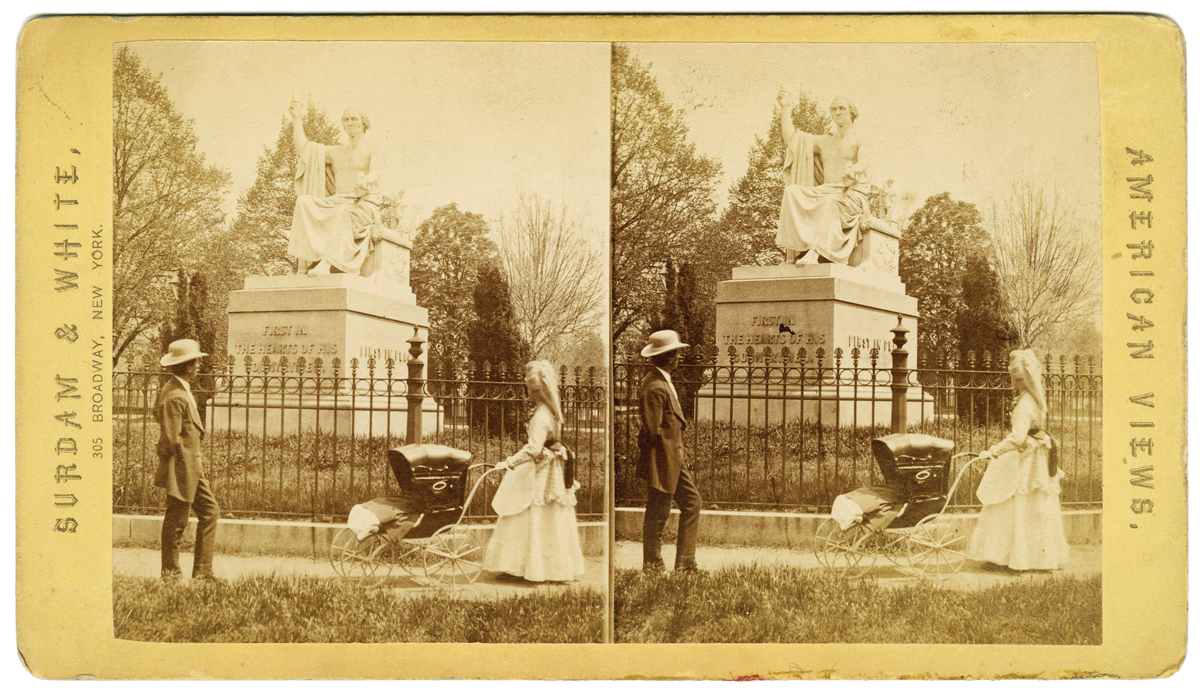FEATURED PHOTO

Striking a Pose
The curious journey of a 19th-century George Washington statue
In 1832, to commemorate the centennial of Washington’s birthday, Congress commissioned a marble statue from American sculptor Horatio Greenough to be placed in the rotunda of the nation’s Capitol in Washington, D.C.
Working in his studio in Florence, Italy, the artist depicted a robed Washington in the neoclassical style. Greenough was inspired by the statuary of ancient Greece and modeled the seated figure on a famous lost statue, the Olympian Zeus, by the ancient Greek
sculptor Phidias.
The 12-ton piece took eight years to complete and received mixed reviews when it arrived stateside in 1841. Some appreciated Greenough’s attempt to create a timeless masterpiece. Others struggled to get past a bare-chested Washington.
In 1843, the monument was moved outside to the east Capitol grounds. The three front-facing sides of its elevated stone base are inscribed with the quote, “First in War/First in Peace/First in the Hearts of His Countrymen.” For the next 60 years, the statue was
exposed to the elements. It was ultimately transferred to the Smithsonian in 1908 and is currently on view at the National Museum of American History on the National Mall, in Washington, D.C.
In the image above (circa 1870), a man, and a woman pushing a pram, admire the statue. It’s a stereograph, a popular souvenir at the time, consisting of two images that give a three-dimensional effect when viewed through a special device.
Following Greenough’s death in 1852, his widow Louisa Ingersoll Greenough carried on the Washington connection by joining the Mount Vernon Ladies’ Association as the first Vice Regent for Massachusetts. She served in this important role of saving and
preserving Washington’s home from 1858 to 1865.